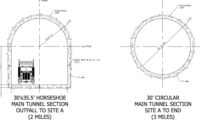DOD to Contractors: No Inflated Cost Pay on Current Fixed-Price Jobs

Photo: iStockphoto
The U.S. Dept. of Defense has issued guidance to contractors saying that it won't pay more to cover unexpected inflation costs for existing fixed-price contracts unless the contract included a price adjustment clause.
If it's not already in there, DOD says, contractors are out of luck.
Contracts currently being negotiated are another matter, says the new agency guidance, but DOD contracting officers should be very specific when agreeing to economic price adjustment clauses.
Issued May 25 by John Tenaglia, principal director of defense pricing and contracting, the guidance memorandum is not a complete surprise to companies that have already been told by contracting officers that there won't be any cost fixes on current jobs without adjustment clauses.
But in the future, adjustment clauses are an "appropriate tool," he said, which may enable a contractor to accept a fixed-price job without having to develop prices based on worst-case projections.
There are limits, however.
Such adjustment clauses are only appropriate for longer contracts, and Federal Acquisition Regulations say clauses should only be used when delivery or performance of the work won't be completed until six months after the contract award, Tenaglia said.
The clauses should be tied only to costs "judged to be the most unstable" in the specific project, he said. Independent, recognized sources should be relied upon for potential justification of increased costs, he added.
Kevin Barnett, an attorney at Piliero Mazza, calls the guidance memorandum an "unfortunate decree" that supports his firm's recent webinar on the subject saying that any request for additional pay must be based on a price adjustment clause of some kind, or as the result of a government change or delay.
Congress last month had asked DOD about how it would handle claims for inflation. "DOD claimed that contractors had filed few requests" for more pay, Barnett writes.
"Instead of providing relief under the current contract, DOD told Congress that it expects contractors to raise prices on future contracts to make up for those losses—separate from any price increases needed to accommodate risk," he added in an assessment of the policy on his firm's website,
Insurance Rates Lag Higher Costs
Inflation is also complicating risk calculations for property and casualty insurers.
Premiums and coverage limits are not keeping pace with the risks insurers are taking on home and commercial property construction, where new costs have added to insurers' risks, suggests a recent report by Moody’s Investors Services.
Inflation has made it a particularly expensive time for things to go wrong on projects and to require rework or purchase of new materials that may be needed.
According to Moody’s, in the first four months of 2022, the cost of building materials of all kinds rose 26.7%; with labor costs up 5.5%.
For commercial property insurers, the price increases "drive up repair and rebuilding costs,” Moody’s notes.
With the increases, the company writes, “Insurers are raising coverage levels and rates, but generally not sufficiently to cover higher construction costs.” In other words, customers are not facing premium increases large enough to track the cost hikes.
According to Moody's, insurers don’t want to give clients sticker shock by pushing through large increases in one year.
Many insurers have a long-term policy of raising rates by 3% to 5% “to smooth out construction cost volatility,” Moody’s says. But sooner or later, it concludes that rates will have to rise and policy limits tighten.





